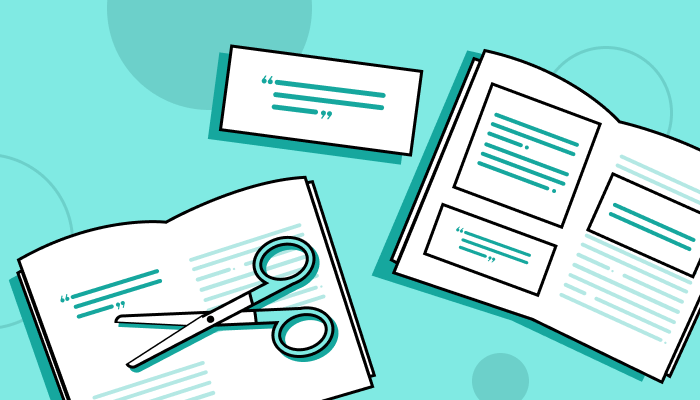Introduction
Plagiarism checkers have become indispensable tools in the quest for academic and professional integrity. These software solutions play a pivotal role in ensuring that individuals produce original content and give proper credit to the works of others. In this article, we will demystify the inner workings of plagiarism checkers, shedding light on the technology that helps maintain honesty in academia and beyond.
What Is a Plagiarism Checker?
A plagiarism checker is a software application or online service designed to identify instances of plagiarism in written or digital content. These tools compare the text provided against a vast database of sources, including academic papers, books, articles, websites, and previously submitted student assignments.
How Do Plagiarism Checkers Detect Plagiarism?
Plagiarism checkers employ sophisticated algorithms and techniques to identify potential instances of plagiarism. Here’s how they work:
Text Comparison:
The core function of a plagiarism checker is to compare the submitted text with a vast database of existing content. This database may include academic journals, websites, books, and previously submitted assignments.
String Matching:
Plagiarism checkers use string-matching algorithms to identify identical or closely matching phrases, sentences, or paragraphs between the submitted text and the database.
Fuzzy Matching:
To catch more sophisticated instances of plagiarism, some checkers employ fuzzy matching algorithms. These algorithms consider synonyms, sentence structure variations, and word reordering to identify similarities.
Citation and Reference Checks:
Plagiarism checkers also check if the submitted work properly cites and references external sources. Failure to do so can be flagged as potential plagiarism.
Cross-Check with Other Submissions:
In educational settings, plagiarism checkers can cross-reference the submitted work against previous student submissions to detect self-plagiarism or unauthorized recycling of content.
Generating Reports:
After the analysis, plagiarism checkers generate detailed reports highlighting potential instances of plagiarism. These reports typically include a percentage of similarity and highlight the matched sections.
Sources of Comparison:
The effectiveness of a plagiarism checker depends on the comprehensiveness of its database. Most checkers have access to:
Academic journals and databases.
Published books and articles.
Websites and blogs.
Previously submitted student assignments (in educational settings).
Proprietary databases created by the checker’s developers.
Limitations of Plagiarism Checkers
While plagiarism checkers are invaluable tools for maintaining academic integrity, they do have limitations:
False Positives:
Plagiarism checkers may sometimes flag content as potentially plagiarized when it’s not. This can occur with commonly used phrases or public-domain texts.
False Negatives:
Conversely, they may miss instances of paraphrased plagiarism or content from obscure sources not indexed in their databases.
Interpretation of Results:
Plagiarism checkers do not make final judgments on whether plagiarism has occurred. They provide data for human assessment, and educators or content evaluators must interpret the results.
Context Matters:
Plagiarism checkers cannot evaluate the context in which a source is used. While a sentence may match an existing source, it might be appropriately cited and referenced, making it non-plagiarized.
Incomplete Databases:
Some plagiarism checkers may not have access to all relevant sources, potentially leading to incomplete results.
Popular Plagiarism Checker Tools
Several plagiarism checker tools are widely used in both educational and professional settings:
Turnitin:
A popular choice in academic institutions, Turnitin compares submitted student papers with a vast database of academic content.
Grammarly:
Grammarly not only checks for grammar and spelling but also provides a plagiarism detection feature that scans the web for similar content.
Copyscape:
Primarily used to check website content for plagiarism, Copyscape is favored by website owners and content creators.
Plagscan:
Plagscan is known for its extensive database and is used by educators and professionals to detect plagiarism.
Conclusion
Plagiarism checkers are powerful tools that help maintain the standards of academic and professional integrity. By employing advanced algorithms and comparing submitted content to extensive databases, they can effectively identify potential instances of plagiarism. However, it’s crucial to remember that plagiarism checkers are not infallible and should be used as aids in conjunction with human judgment to make informed decisions about the originality and integrity of written work. These tools play a pivotal role in upholding ethical standards in academia and beyond, ensuring that the pursuit of knowledge and creativity remains rooted in honesty and transparency.
Editing More than 200,000 Words a Day
Send us Your Manuscript to Further Your Publication.








Is ChatGPT Trustworthy? | Rovedar | Scoop.it says:
ChatGPT vs. Human Editor | Rovedar | Scoop.it says:
Enhancing Your Assignments with ChatGPT | Roved... says: